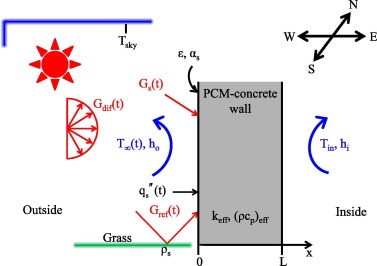Citation
Thiele, A.M.; Jamet, A.; Sant, G.; Pilon, L. Energy Conversion and Management 2015, 103, 374-386.
Thiele, A.M.; Jamet, A.; Sant, G.; Pilon, L. Energy Conversion and Management 2015, 103, 374-386.
This paper examines the annual energy and cost savings potential of adding microencapsulated phase change material to the exterior concrete walls of an average-sized single family home in California climate zones 3 (San Francisco, CA) and 9 (Los Angeles, CA). The annual energy and cost savings were larger for South- and West-facing walls than for other walls. They were also the largest when the phase change temperature was near the desired indoor temperature. The addition of microencapsulated phase change material to the building walls reduced the cooling load in summer substantially more than the heating load in winter. This was attributed to the cold winter temperatures resulting in nearly unidirectional heat flux on many days. The annual cooling load reduction in an average-sized single family home in San Francisco and in Los Angeles ranged from 85% to 100% and from 53% to 82%, respectively, for phase change material volume fraction ranging from 0.1 to 0.3. The corresponding annual electricity cost savings ranged from $36 to $42 in San Francisco and from $94 to $143 in Los Angeles. From an energy standpoint, the best climate for using building materials containing uniformly distributed microencapsulated phase change material would have outdoor temperature oscillations centered around the desired indoor temperature for the entire year.
